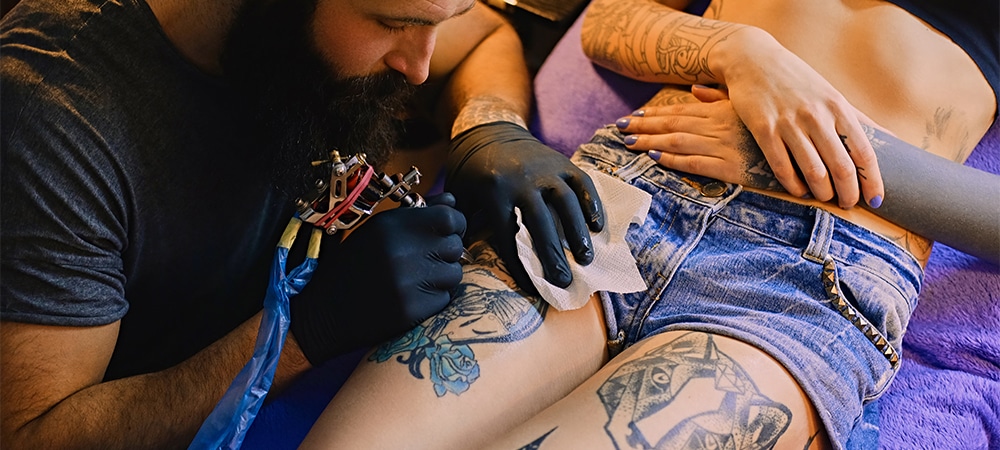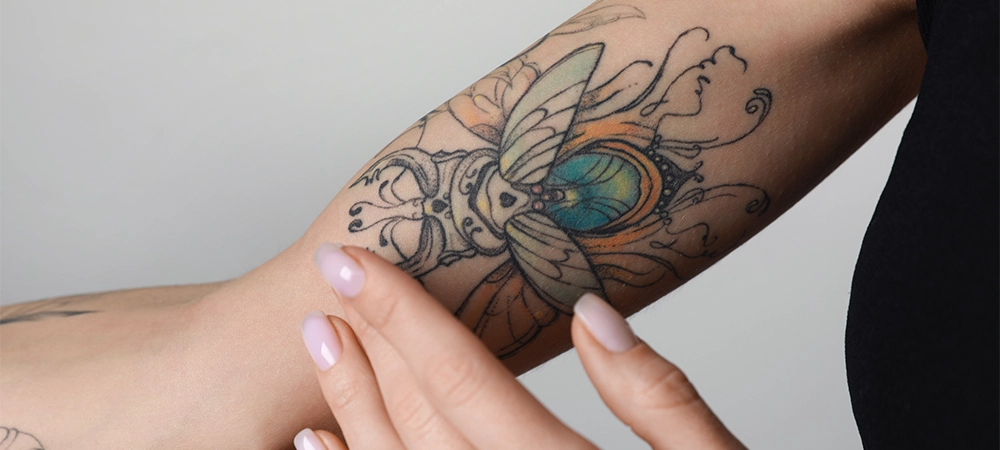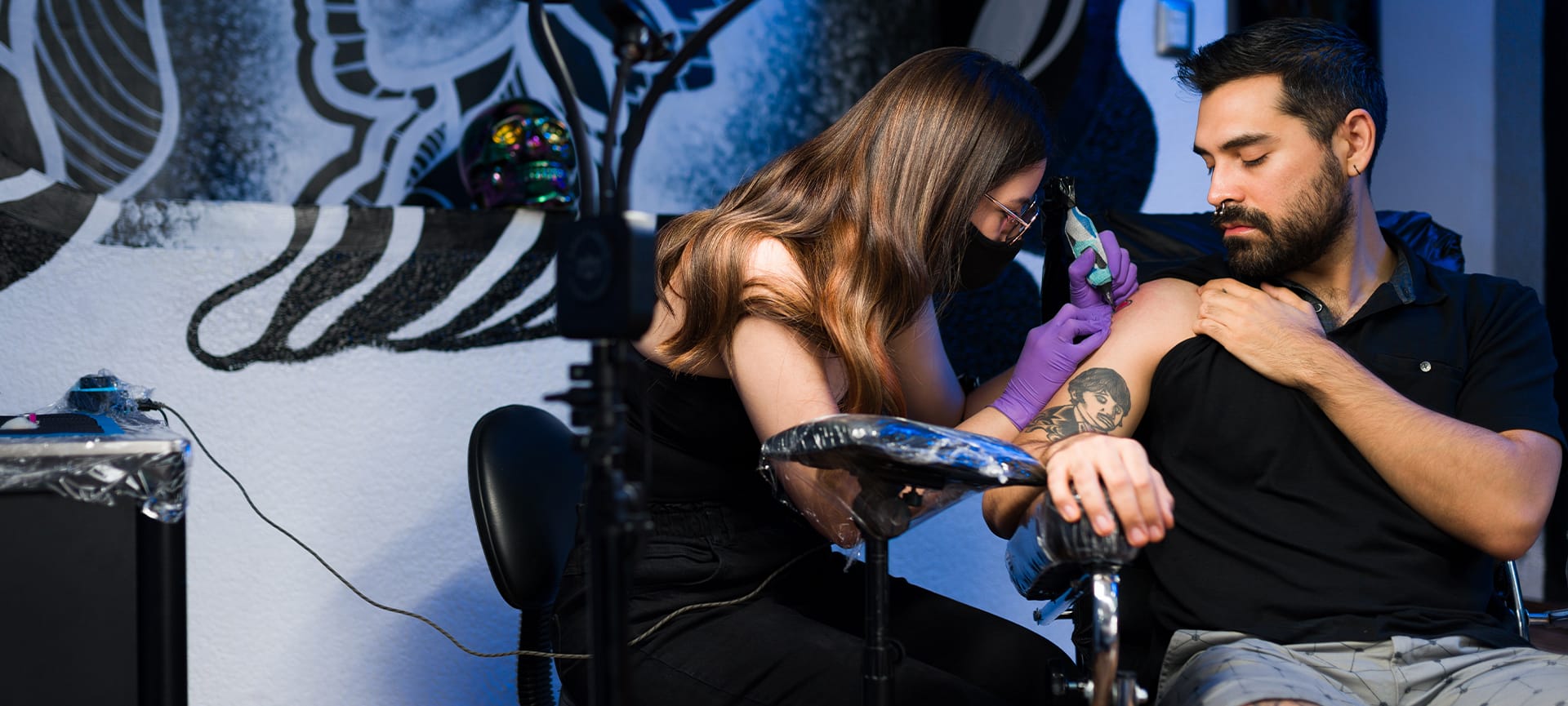Getting a tattoo is a personal and meaningful experience, but it’s also a physical one. If you’re planning to get inked, you’ve probably wondered how much it’s going to hurt. The truth is, tattoo pain varies depending on where you get tattooed, your pain tolerance, and the style of tattoo you choose.
At Piranha Tattoo in Vaughan, Ontario, we’ve guided thousands of clients through their tattoo journeys. Whether it’s your first piece or your fiftieth, we believe in helping you make informed decisions, especially when it comes to comfort.
In this guide, we break down the most and least painful places to get tattooed, explain why certain spots hurt more than others, and share tips to help you prepare.
Related Article: 8 Must-Ask Questions Before Getting a Tattoo
Why Some Tattoo Spots Hurt More Than Others
Tattoo pain is mostly about anatomy. Areas with more nerve endings, thinner skin, or less fat tend to be more painful. Places with dense bones or lots of movement also add to the discomfort.
Here’s what increases tattoo pain:
- Lots of nerve endings (hands, feet, face)
- Thin skin or little fat (ribs, spine)
- Proximity to bone (ankles, elbows, knees)
- Constant movement or flexing (wrists, fingers, armpits)
Areas with more muscle or fat cushion the needle, making the experience more manageable.
Related Article: How to Prepare for a Tattoo
The Most Painful Tattoo Spots
These areas are known for being tough, but they can also make for bold, expressive tattoos if you’re ready for the challenge.
1. Ribs
The ribs are notoriously painful because they’re close to the bone and have thin skin. Breathing during the session also makes it harder to stay still. This area is best for experienced clients who are prepared for a longer, more intense session.
2. Spine
With bone running right under the skin and lots of nerve endings, the spine can be very uncomfortable, especially for longer pieces. It’s a dramatic spot for vertical designs, but movement and posture during healing need extra care.
3. Feet and Ankles
These bony areas have minimal cushioning. They’re also high-movement zones, which can make healing tricky. Expect sharp, stinging pain and a bit more swelling, especially if you’re on your feet often.
4. Elbows and Knees
Full of bone and joint movement, these areas amplify both the sensation during the session and soreness afterward. Tattoos here may also require touch-ups due to the way skin flexes and regenerates.
5. Armpits
One of the most sensitive spots on the body, the armpit has many nerves and thin skin. It’s often ranked among the most painful places to get inked. This area should only be considered if you’re truly committed to the design.
6. Groin or Inner Thigh
This area is sensitive due to skin thinness and nerve density. It’s also more prone to swelling. Despite the discomfort, it offers ample space for creative, concealed designs.

The Least Painful Tattoo Spots
If you’re nervous about pain, these areas are great starting points. They’re more padded, have fewer nerve endings, or just hurt less overall.
1. Outer Upper Arm
This area has thick skin, good muscle, and minimal nerve sensitivity. It’s one of the most common spots for first tattoos because it’s easy to access, heals well, and offers good space for a variety of styles.
2. Thigh (Outer)
Well-cushioned and easy to work with, the outer thigh is great for large pieces and has lower pain levels. It’s also a discreet area that allows for easy concealment during healing.
3. Calf
The back of the leg has more padding and fewer nerves, making it a comfortable place for medium to large designs. It’s ideal for sleeve extensions or nature-inspired wraps.
4. Shoulders
A classic choice, the shoulders are relatively low-pain with easy healing and minimal daily interference. Many clients start here and later expand into larger shoulder-to-sleeve pieces.
5. Buttocks
Surprisingly, this is one of the least painful spots due to ample fat and muscle. It’s perfect for more private designs or playful pieces that don’t need frequent touch-ups.
Related Article: How Long Does It Take for a Tattoo to Heal?
Tips for Managing Tattoo Pain
Even in the more sensitive areas, preparation and mindset can make a huge difference in how you experience tattoo pain. Here are some practical ways to make your session more manageable:
- Eat a good meal before your appointment: Low blood sugar can make you feel faint or dizzy, especially during longer sessions.
- Stay well-hydrated: Hydrated skin is more elastic and easier to tattoo, which can help reduce trauma to the skin.
- Avoid alcohol and caffeine 24 hours before: Both can thin your blood and increase sensitivity during the session.
- Dress comfortably: Wear loose-fitting clothes that won’t rub against the fresh tattoo and that allow your artist easy access to the area being tattooed.
- Bring distractions: Listening to music or a podcast can help take your mind off the pain. Some people even bring stress balls or fidget items.
- Take breaks when needed: Don’t be afraid to ask your artist for a short pause. Communication is key to a positive experience.
- Breathe steadily and stay calm: Holding your breath or tensing up can heighten pain. Deep breathing helps keep your body relaxed.
- Trust your artist: A skilled artist, like those at Piranha Tattoo, works efficiently and knows how to manage your comfort throughout the session.
Remember, tattoo pain is temporary, but your art is forever. Being physically and mentally prepared goes a long way in making the experience a positive one.

Pain vs. Style: Making the Right Choice
Pain shouldn’t be the only factor when choosing a tattoo location, but it’s an important one. At Piranha Tattoo, our artists help balance your vision with practical advice on placement and tattoo aftercare.
For example:
- Fine line tattoos hurt less overall but may not hold up as well in high-movement areas.
- Blackwork or shading-heavy styles can take longer and feel more intense, especially on sensitive skin.
- Highly visible spots may fade faster due to sun exposure or rubbing, even if they’re relatively painless to tattoo.
We also consider your skin tone, body shape, and how the tattoo will age over time. If you’re unsure, inquire more. We’ll walk you through style, pain levels, healing expectations, and long-term durability so you can make the best choice for your body and your art.
Related Article: Pain vs. Pleasure: Debunking Common Myths about Tattoos and Piercings
Pain Is Part of the Process—But It’s Worth It
Every tattoo comes with some level of discomfort, but at Piranha Tattoo, we make sure that what you feel is worth what you get. Whether you’re going for a minimalist wrist tattoo or a detailed back piece, we guide you every step of the way.
Thinking about your next piece? Book a consultation at Piranha Tattoo, and let’s talk about design, placement, and what to expect. We’re here to help you love your ink — pain and all.

